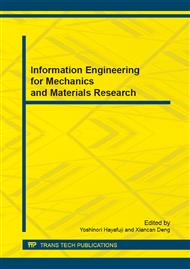p.105
p.113
p.118
p.123
p.127
p.132
p.136
p.141
p.146
Optimal Launch Vehicle Configuration from Existing Solid Rocket Motors Using Genetic Algorithm
Abstract:
This paper describes the optimization approach of a three stage solid propellant launch vehicle configuration from existing solid rocket motors (SRM). The optimal launch vehicle (LV) is capable of delivering a small satellite of 100 kg to a circular low earth orbit of 400, 500 and 600 km altitude. The overall LV configuration and the trajectory profile were optimized simultaneously, thus the existing SRM parameters for first, second and three stages, vertical flight time, launch maneuver variable, maximum angle of attack, coasting time between first and second stage and the second coasting time between second and third stages were optimized. A genetic algorithm global optimization method has been implemented to perform the analysis, the algorithm consider mixed integer continuous variables. The results show that the proposed optimization approach was able to find the optimal solution for all three variants with very acceptable values, and the approach proved to be reliable for conceptual design level.
Info:
Periodical:
Pages:
127-131
Citation:
Online since:
September 2013
Authors:
Keywords:
Price:
Сopyright:
© 2013 Trans Tech Publications Ltd. All Rights Reserved
Share:
Citation:


